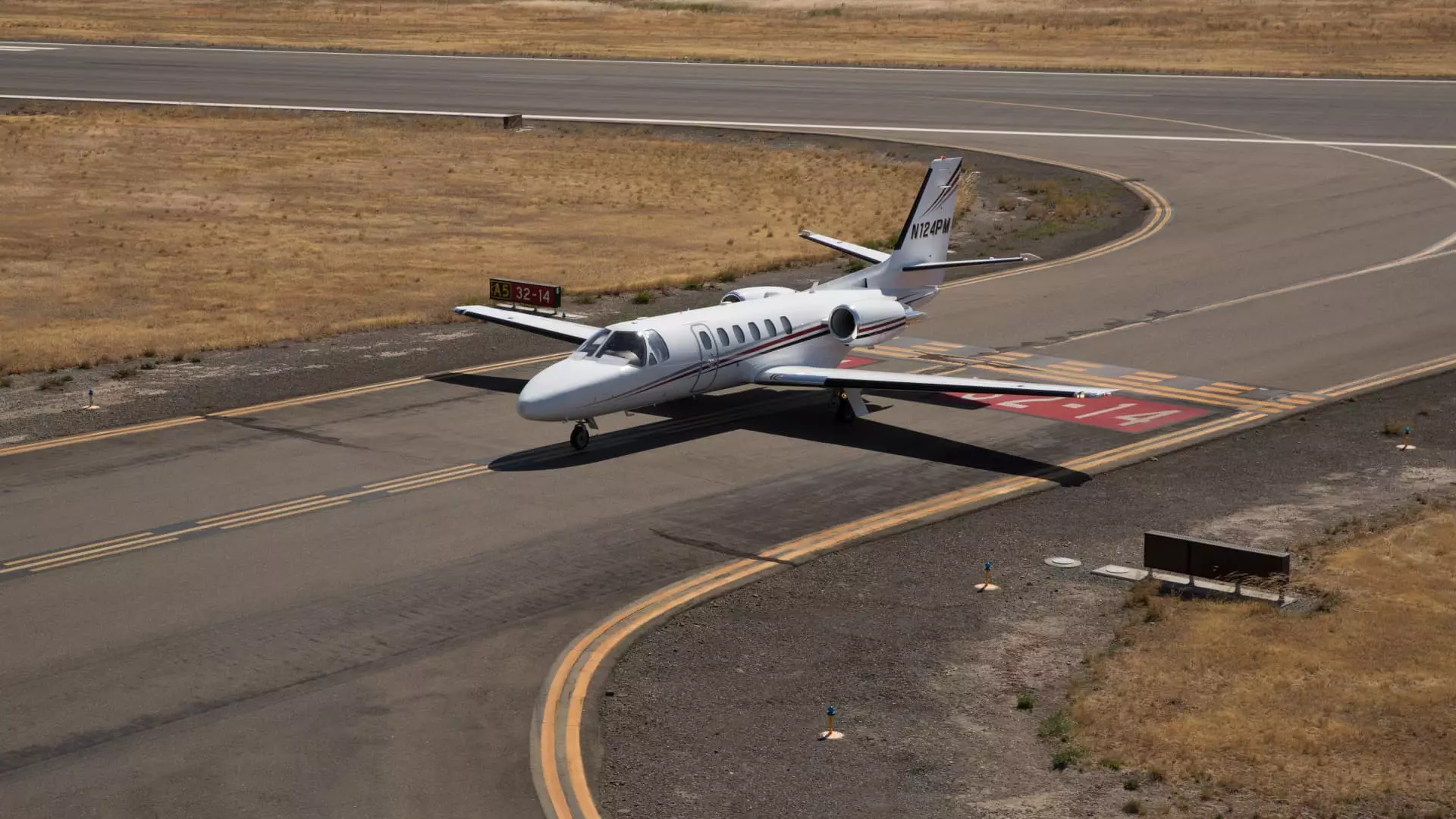In a seemingly unpredictable economic landscape, the aviation industry, particularly the business jet market, is facing a stark downturn. Consumer confidence has plummeted, and even the wealthiest individuals, once deemed insulated from economic fluctuations, are rethinking hefty purchases. A recent survey by Barclays—a trusted indicator in the aviation sector—reveals staggering statistics: interest in business jet acquisitions has decreased by a whopping 49% since March. The consequences are evident and alarming, marking a significant shift in the mindset of consumers who previously soared at the mere thought of making such exclusive investments.
What we are witnessing is more than mere numbers on a spreadsheet; it reflects deeply rooted anxieties in a post-pandemic world. The financial fragility portrayed by this survey’s findings suggests a profound crisis of confidence that transcends monetary wealth. It is as if the skies, once open for luxury travel, have turned into a daunting horizon, filled with uncertainties. David Strauss, a Barclays analyst, optimistically anticipated a decline in sentiment but failed to predict its magnitude—an indication that the industry may be flying blind, unable to navigate the rising turbulence of economic anxieties.
The Mechanics of a Market in Decline
The Barclays Business Jet Indicator survey, which utilizes five metrics to gauge market conditions—including inventory levels and pricing outlook—paints a grim picture. In the span of a month from mid-March to mid-April, all metrics, barring inventory levels, saw a decline. The composite score fell sharply from 52 to 40, an indication that demand is not just waning but potentially facing a cataclysmic stall. For industry players, this is a grave warning: a score in the low 40s suggests that business jet manufacturers are sitting on unsold inventory, with production rates that may not meet current demand.
One particularly alarming finding is the overwhelming pessimism surrounding tariffs. A staggering 93% of survey respondents believe that tariffs will negatively impact demand. Such sentiments reveal the dread of market unpredictability, forcing clients to press the pause button on significant investments. Feeble economic signals combined with geopolitical complexities have caused hesitation, and for nearly half of the respondents, the landscape appears more precarious than ever.
The Shadow of Legislative Changes
Yet amid this darkening cloud, there lies a flicker of hope. Legislative changes may serve as a beacon for business jet manufacturers with the potential for recovery. Recently, both the Senate and House have made headway on a budget resolution aimed at extending the Tax Cuts and Jobs Act (TCJA), which ushered in crucial benefits for equipment purchases. The possibility of reviving a 100% upfront deduction could reinvigorate buyer interest, and while the path forward seems tangled, the notion of retroactive deductions has the power to reshape investor behavior.
One might argue that such a financial lifeline is necessary in an industry struggling to maintain its pulse. Historically, tax incentives have played pivotal roles in the aviation sector, compelling businesses to invest in growth. The stakes are monumental: it signals an opportunity for recovery amidst the swirling uncertainties facing potential buyers. Nevertheless, the question remains whether these legislative measures can indeed turn the tide back to robust demand, or if they are simply a band-aid on a larger, festering wound.
A Flawed Approach to Wealth and Consumption
What this situation emphasizes, beyond numbers and trends, is the flawed perception of wealth and consumer behavior within the high-flying jet market. The notion that money alone can shield individuals from economic realities is rapidly evaporating. The shrinking interest in luxury items like business jets resonates with broader societal changes, reflecting a growing awareness regarding resource allocation and sustainability.
In a world increasingly grappling with economic inequality and environmental concerns, the allure of business jets may no longer hold the same weight. The future may demand a re-evaluation of what luxury signifies in an age where corporate responsibility and social conscience are on the rise. The dilemma facing the business jet market is not merely about demand and economic forecasts; it’s about adapting to a changing landscape where consumer values are shifting profoundly.
As one envisions the sky, lush with the potential for growth and prosperity, the reality is layered with challenges that call for introspection and innovation—a shift that goes beyond the ticker symbols to reach the very core of what it means to navigate the clouds of financial possibility.


Leave a Reply